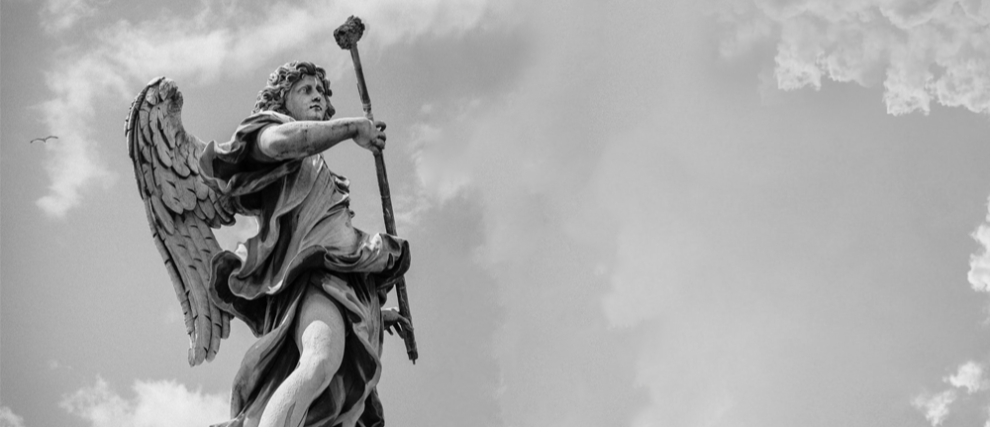Everything You Need to Know about Pilgrimage: Definition, Origin, and Sites around the World
“The pilgrim always has a goal, even if sometimes he is not explicitly aware of it. And this goal is none other than the encounter with God through Christ.” Pope Benedict XVI
Setting out on pilgrimage, in the footsteps of great saints or to meet the Blessed Virgin Mary or Saint Joseph, is a powerful moment in a Christian’s life. It is an intense experience both physically and spiritually. The pilgrim renews his faith in communion with other Christians and reaffirms his love for and trust in Jesus Christ. There are many pilgrimage sites, in France and all over the world, notably where great apparitions have taken place.
What is a pilgrimage?
A pilgrimage is a journey undertaken by a believer, called a pilgrim, to a place considered sacred and likely to foster prayer. The word “pilgrimage” comes from the Latin peregrinatio, meaning the desire to “travel far.”
Pilgrims traditionally travel on foot, for example on the pilgrimage to Saint James of Compostela, where pilgrims come from Europe and all over the world, on foot, to the Spanish shrine.
Believers therefore take legendary routes to reach places where saints lived, sometimes where apparitions occurred, and were messengers of the Lord.
We find traces of the first Catholic pilgrimages in the 3rd century, in the principal holy places mentioned in the Gospels and in the Old Testament, notably the sites of the Passion of Christ. The Edict of Milan in 313 declared pilgrimage to be an essential part of Christianity. They multiplied everywhere, especially from the 4th century onward. Many writings recount the pilgrimages of men setting out for the Holy Land. In the Carolingian era, the legal protection of pilgrims developed, as well as a law of pilgrims, officially constituting the status of the pilgrim. An order of pilgrims also came into being.
Why go on pilgrimage?
For every pilgrim, a pilgrimage is an opportunity to take stock of his life with God, to pray to Him by asking for His graces and guidance. It is a return to the sources, through faith, thanks to times of prayer and penance, reflection and self-transcendence, as well as the experience of a pilgrim life turned toward one’s neighbor.
Those who set out on pilgrimage are sure to live a unique experience of encounter with other pilgrims, but above all with the Lord, present at every moment along the way. Setting out on pilgrimage means discovering new places, new countries; but it also means embarking on an inner journey in order to find oneself, outside of time and the frenzy of daily life, in silence with Christ.
The Christian therefore goes on pilgrimage to be refreshed in his faith, in his life in the Church, in his fraternal life, but also sometimes with a view to reconciliation with Christ. The pilgrim can confess his sins and be forgiven by the Lord along the way.
“Pilgrimages evoke our journey on earth toward heaven. They are traditionally peak times of renewed prayer. Shrines are exceptional places for pilgrims seeking their living springs, to live ‘in the Church’ the forms of Christian prayer.” Catechism of the Catholic Church
The main pilgrimage sites around the world
Here are the great Christian pilgrimage sites in the world:
Jerusalem, in Israel, and the Holy Land, in the West Bank → walking in the footsteps of Christ, going to the last places where he was, and traveling the way of his Cross are, for Christians, unforgettable and very powerful moments.
The Vatican, in Italy → pilgrims go to the Vatican to hear the pope speak publicly, every Wednesday, in St. Peter’s Square; but also to gather at the tomb of the first pope, Saint Peter.
Our Lady of Guadalupe, in Mexico → a shrine was built after the apparition of the Virgin Mary to a young Aztec peasant and after the holy woman obtained reconciliation between the Spanish colonists and the Aztecs who were at war. This event marked the starting point of the evangelization of the South American continent.
Santiago de Compostela, in Spain → under the patronage of the holy apostle James the Greater, pilgrims generally set out from Vézelay or Le Puy-en-Velay, two French towns. More than 100,000 people follow this route each year.
Lourdes, in France → a national Marian pilgrimage is held every August 15. It welcomes between 4 and 6 million pilgrims per year. Seventy miraculous healings have taken place at the shrine of Lourdes and have been officially recognized by the Church.
Fatima, in Portugal → the Blessed Virgin Mary appeared in Portugal to three shepherd children in 1917. Since then, the mother of Jesus has entrusted them with messages to transmit to the world for the Church.
Mont-Saint-Michel, in France → this magnificent place of pilgrimage, on a rock in the middle of a Norman bay, attracts almost 2 million pilgrims every year. Christians pray with the brothers and sisters of the Community of Jerusalem who live on the mount, under the protection of the archangel Saint Michael.
Cotignac, in France → a major pilgrimage site to Saint Joseph, after an apparition, notably for fathers of families who walk to Mont Verdaille in order to entrust their concerns as men, husbands, and fathers to the immense love of the Holy Family.
Medjugorje, in Bosnia and Herzegovina → after the apparition of the Blessed Virgin Mary to six children in 1981, this place became a major pilgrimage site to which several million pilgrims go each year.
Excerpt from the document The Pilgrimage in the Great Jubilee of the Year 2000, approved by Saint John Paul II
“The Christian’s pilgrimage to a shrine consists in walking toward ‘the Tabernacle of the Covenant,’ of which the Bible speaks; it is a way of faith whose every stage is celebrated according to the corresponding liturgical rites. Its goal: the encounter and dialogue with God, listening to the Word. The pilgrimage also leads to the encounter with the Church, the Body of Christ. It enables a renewal of the pilgrim’s baptismal commitment, the encounter with Christ in Reconciliation and in the Eucharist.
This encounter then becomes an opening to charity—God’s charity first, then the charity that the pilgrim will try to live. For it will be at the same time the encounter with humanity and thus with other believers in God. At the same time as he encounters God, the pilgrim encounters himself. He also finds Mary, his sister in praise, and awaits, like the whole Church and humanity, the ‘heavenly Jerusalem.’”
Prayers of the pilgrim
Prayer to ask the Lord to become a pilgrim
“Lord Jesus,
You who ran all the roads, those of exile, those of pilgrimages, those of preaching, draw me out of my selfishness and my comfort, make me a Pilgrim.
Lord Jesus, you who so often took the way of the mountain to find silence, to proclaim the Beatitudes, make me a Pilgrim.
Constantly tempted to live at ease, constantly tempted to settle down, you ask me to walk in Hope toward You in the glory of the Father.
Grant, Lord, that I may walk, that I may climb by the summits toward You, with my whole life, with all my brothers, with all Creation, in boldness and adoration. Amen.”
Prayer of blessing for pilgrims
“Lord
You made the children of Israel cross the sea on dry ground.
You showed the three Magi the way that leads to You by guiding them with a star.
We pray to you: grant us a good road and good weather.
Grant that, in the company of your holy angel, we may happily arrive at the place we wish to reach and, in the end, at the harbor of eternal salvation.
Lord, be attentive to our supplications and guide the journey of your servants so that it may take place happily under your safeguarding.
Grant that, amid all the vicissitudes of this journey that is this life, we may always be under your protection and that of Mary, our Mother.
Let us go in your peace, Lord.”
Discover the life of the patron saint of pilgrims: Saint Benedict Joseph Labre
Continue your prayer with Hozana!
Discover wonderful prayer communities thanks to Hozana!
Take part in !
!

